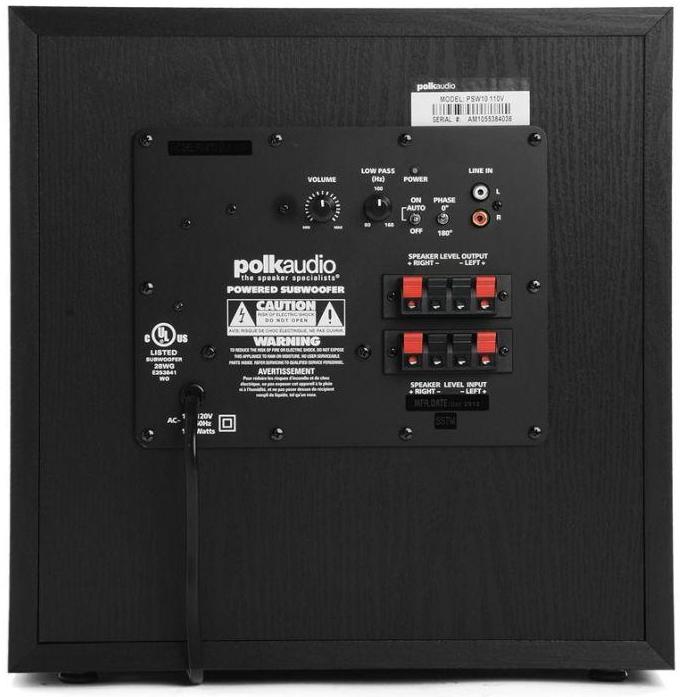Home theater systems combine traditional home stereo components (receiver and speakers) with AV system components (video switching, dolby surround speaker, etc.). For people who enjoy listening to music and watching video, you can build one system to do both very well.
Most movies have a dolby surround audio soundtrack. To hear all the audio properly, you’ll need a mono center speaker, left and right front speakers, left and right rear speakers, and a sub woofer. This will produce the best sound. When listening to music, you’ll probably use only the left and right speakers, so it’s a good idea to choose high quality left and right speakers.
Audio. Here are some components worth considering for a home theater AV system.
- Amplifier / Receiver. Yamaha RX-V383BL 5.1-Channel 4K Ultra HD AV Receiver with Bluetooth – $280 [Amazon]
- Center Speaker. Polk Audio Signature S35 American HiFi Home Theater Slim Center Speaker – $300 [Amazon]
- Front Left/Right Speakers. Onkyo SKF-4800 2-Way Bass Reflex Floor-standing Speakers (Pair) – $300 [Amazon]
- Rear Left/Right Speakers. Polk Audio Signature S10 American HiFi Home Theater Compact Satellite Surround Speaker – $150 [Amazon]
- Speaker Wire. AmazonBasics 16-Gauge Speaker Wire – 100 Feet. – $11 [Amazon]
- Speaker Wire Banana Plugs. Monoprice 24k Gold Plated Speaker Banana Plugs, Closed Screw Type – 5 Pairs – $7 [Amazon]
Video. Suggesting a television system is more difficult because each person has their own preference of brand, size, and features. Samsung is usually a good choice. Here are a variety of options.
Samsung Curved Display 4K Ultra HD Smart LED TV (2017 Models)
- UN49MU6500 Curved 49-Inch $630 [Amazon]
- UN55MU6500 Curved 55-Inch $780 [Amazon]
- UN65MU6500 Curved 65-Inch $900 [Amazon]
Further Reading
The following are recommendations I offered to someone by email, discussing some component choices in more detail. This is advice offered to someone who has a Samsung UltraHD 4K display, DirecTV receiver, and an older Sony AV receiver with an optical audio input but without HDMI inputs. It’s shared here because this is a very common configuration and others may benefit from the advice.
BLU-RAY PLAYER ($99)
There are a variety of high rated Prime eligible blu-ray players:
I’d suggest looking at only the Samsung models because it’s really nice having that single Samsung remote from your television be able to control as many devices as possible, and I believe a nicer Samsung blu-ray player would be identified by the television in the same way the DirecTV was automatically identified. I’m assuming these will have that feature which would be convenient.
So, here’s a list of high rated Prime eligible Samsung blu-ray players:
The Samsung BD-J5100 would be a good choice for $79:
It has smart tv capabilities built-in, but doesn’t have Wi-Fi so Ethernet is needed to connect to the Internet. However, in your situation, I think you’d be using the television as your smart TV center, and the blu-ray player would just be used to play blu-ray and DVD discs as well as CDs. The customer ratings are 4.1 stars out of 5 which is okay, but not as good as others.
The Samsung UBD-M7500/ZA is a better choice for $149 (normally $249):
I notice Amazon has some lower priced Samsung blu-ray players like the BD-J5700 for $54:
However, you’ll want to stay away from that because it’s an older model, and I didn’t notice any mention of 4K and UHD (ultra high definition) capabilities.
SUBWOOFER ($99)
One option would be to get a single subwoofer like this model (Polk Audio PSW10 10-Inch Powered Subwoofer) which is on sale right now through Amazon for $99 instead of $239:
On the back of the Sony receiver there is a line-level RCA subwoofer output. So, an RCA cable going from that port to the subwoofer would give you the low frequency full sound that your Samsung television currently isn’t able to reproduce. This should provide a very full sound that complements the higher frequencies produced by the Samsung television. The setup should be fairly quick and easy. By using the subwoofer output on the Sony, the Sony would send only lower frequency sounds to the subwoofer to play. You’ll see the subwoofer has two line inputs. You would use only one of these (there’s a single RCA output from the receiver). When the subwoofer receives line level input, it then uses it’s own built-in amplifier to produce the low frequency sounds and the volume knob adjusts how much base intensity you want. The “Low Pass” adjustment determines the crossover setting — how much low frequency you want going to the subwoofer versus and how much would be handled by other speakers on the system.
The subwoofer also has an alternate option to use the left and right front speaker outputs on the Sony receiver, and run speaker wires from the Sony receiver to the subwoofer where it says “SPEAKER LEVEL INPUT RIGHT LEFT.” This would not rely on the subwoofer’s built-in amplifier, but instead use the amplification from the receiver. You’ll notice the subwoofer also has “SPEAKER LEVEL OUTPUT” which could pass the amplified speaker audio (minus the lower frequencies) to some front left and right speakers. That part is really optional because given that you already have the Samsung television audio, combined with the subwoofer, you probably wouldn’t need left and right from speakers connected.
The subwoofer solution would be fine for your television viewing. However, if you’re just listening to music, or an audio source other than the television, you would not have normal stereo sound. So, this is only an option if you’re primarily going to be using the setup for viewing television.
Below is an image of the subwoofer. Click the image for a larger view.
BOOKSHELF SPEAKERS ($118)
Another option would be to get some nice bookshelf speakers like these Sony speakers:
These should produce some very clear base almost rivaling what the subwoofer can do, along with some really nice midrange and high frequencies. These would also work well if you’re planning to listen to music without using the television.
You could add to these speakers a center channel speaker like this Polk Audio model for $70:
That might help reproduce center channel audio better for some movies and television where the audio track is in Dolby 5.1 or higher. However, the left and right speakers on their own should produce the sound you need.
FLOOR STANDING SPEAKERS ($200)
For a step-up in performance from the bookshelf speakers, you could consider these JBL speakers for $99 each:
They would deliver plenty of low-end base as well as midrange and high frequencies. The speaker drivers are lifted high by the design of the case, and in theory this brings the high frequency drivers (tweeters) up to ear level when sitting on the couch (for example). Since high frequencies are more directional, it’s generally considered desirable to have those positioned at ear level.
A lower cost option for floor speakers would be these Dayton T652 speakers that are $118 for the pair:
Although I think the audio quality would be better with the JBL speakers. If you’re wanting something better than the JBL speakers, here’s a list on Amazon of high rated floor standing speakers that also qualify for Amazon Prime shipping:

